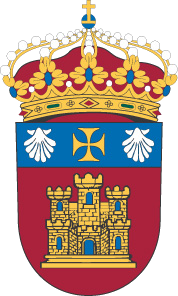Por favor, use este identificador para citar o enlazar este ítem: http://hdl.handle.net/10259/10412
Título
Comparing Methods for Calculating Cross‐Sectional Properties From High‐Resolution CT Scans in Dry Bone: The Case of the Non‐Adult Femoral Midneck
Publicado en
American Journal of Biological Anthropology. 2025, V. 186, n. 3, p. 1-14
Editorial
Wiley
Fecha de publicación
2025-03
ISSN
2692-7691
DOI
10.1002/ajpa.70036
Resumo
Objective: This paper explores the various protocols for deriving endosteal and periosteal contours of the femoral midneckcross-section in non-adult individuals using EPmacroJ.Materials and Methods: We analyzed femoral midneck cross-sectional contours in a total sample of 55 femora belonging tomedieval individuals ranging in age between 2 and 20 years. Femoral midneck cross-sections were taken on high-resolution CTimages and analyzed by EPJMacro in FIJI. Cross-sectional properties were obtained from periosteal and endosteal contoursderived by manual, automatic, spline, and ellipse techniques. Agreement between the manual and the other techniques wasevaluated using percent prediction error (%PE) and following the Bland–Altman approach.Results: All the evaluated techniques used for deriving the periosteal and endosteal contours at the femoral midneck cross-section in non-adult individuals have proven to be interchangeable with manual processing, except for the spline technique forthe endosteal contour. The narrowest limits of agreement were obtained for the total area, moderate limits of agreement werefound for the cortical and medullary areas, and the widest limits of agreement were observed in the section moduli.Discussion: The automatic processing of the periosteal and endosteal contours shows a high level of agreement with the man-ual processing of both contours. Semi-automatic approaches (spline and ellipse) provide less agreement, especially in sectionmoduli. This suggests that inaccuracies in deriving the endosteal contour significantly affect section moduli. The best approachfor extracting the geometric properties of femoral midneck cross-sections is a combination of automatic and manual methods,although automatic methods alone are also effective.
Palabras clave
Biomechanics
Development
Femoral midneck
Growth
Ontogeny
Materia
Anatomía Humana
Human anatomy
Restos humanos (Arqueología)
Human remains (Archaeology)
Versión del editor
Aparece en las colecciones









